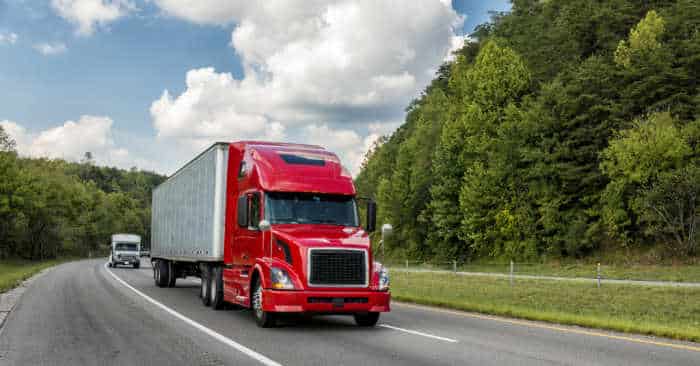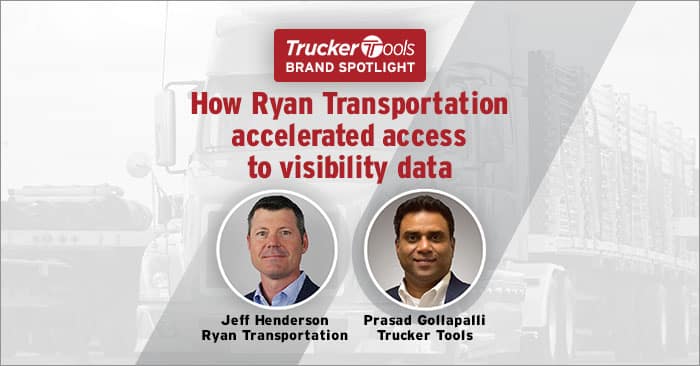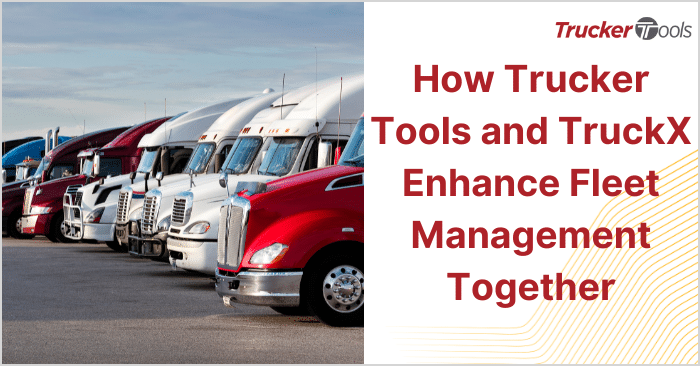In a recent webinar with Trucker Tools entitled “How Ryan Transportation Accelerated Access to Visibility Information,” Ryan Transportation’s Senior VP of Operations
Jeff Henderson spoke about the company’s early adoption of Trucker Tools’ freight tracking platform and the benefits gained through the implementation. With Trucker Tools’ real-time visibility software, Ryan Transportation has increased operational efficiency, daily load volume and the level of service it can offer to larger shippers. The company also has developed proven best practices for encouraging drivers and carriers to use the Trucker Tools mobile app for digital load tracking.
“Being an early adopter of Trucker Tools’ load tracking platform, we’ve learned a lot,” said Henderson. “In the beginning, just telling carriers about freight tracking and sending them the link didn’t always work.”
In the webinar, Henderson shared Ryan Transportation’s different strategies
for building carrier buy-in around digital load visibility, as well as
lessons learned and best practices for increasing carrier adoption of and
compliance with digital load tracking.
1. Make Digital Freight Tracking Mandatory for
All Loads
According to Henderson, providing adequate training and making digital load tracking a mandatory, organic part of the process for shipping a load can help set new expectations around freight tracking — for both internal teams and carriers.
“To increase carrier adoption and compliance, you have to focus on the training of your staff and the folks that are going to be using the system on a day to day basis, not letting up on it and making it a mandated part of the dispatch process,” said Henderson. “If you look back four or five years ago, a completed, successful dispatch was booking the load, negotiating the rate, making sure the carrier is set up correctly and tracking them as they deliver that load. Nowadays with a tool like Trucker Tools’ visibility platform, you still have to talk to the carriers, use your relationships and make sure that things are picked up correctly, but after that, it sure is a lot easier. That’s the way we look at it.”
“To increase carrier adoption and compliance, you have to focus on the training of your staff and the folks that are going to be using the system on a day to day basis, not letting up on it and making it a mandated part of the dispatch process,” said Henderson. “If you look back four or five years ago, a completed, successful dispatch was booking the load, negotiating the rate, making sure the carrier is set up correctly and tracking them as they deliver that load. Nowadays with a tool like Trucker Tools’ visibility platform, you still have to talk to the carriers, use your relationships and make sure that things are picked up correctly, but after that, it sure is a lot easier. That’s the way we look at it.”
2. Be Transparent About Freight Tracking
Requirements and Expectations
Henderson stressed that one of the first things brokers and 3PLs can do to increase carrier adoption of and compliance with digital freight tracking is to have honest conversations with carrier dispatchers and drivers.
“When I talk to my new reps or have my trainers talk to reps about tracking and our expectations, most important to me is to talk about digital freight tracking upfront,” said Henderson. “That means you don’t go into the load details of where the load is picking up, where it’s going to, what the price is and any of those things before you have a discussion about the fact that this load needs to be tracked. You need to tell them upfront that it’s a requirement from the customer.”

3. Don’t Be Afraid To Say No
The next part of that conversation, says Henderson, may involve saying no if the carrier or driver won’t track the load digitally. Henderson said that the willingness to say no to carriers who refuse to use digital load tracking tech is not only about meeting shippers’ visibility consistency and compliance requirements. It’s also about forming relationships with carriers who also recognize the value of digital load tracking and technology in general.
“Don’t be afraid to say no to that carrier if they say no, my driver refuses to do that or we won’t do that,” advised Henderson. “Now you know everybody needs to get their load covered, and sometimes there might just be one truck for that load, but you know for the most part, we really want to continue to work with carriers that want to get better at this and adapt to this technology like how we want to. As I said, relaying this to them up front is really important.”
“Don’t be afraid to say no to that carrier if they say no, my driver refuses to do that or we won’t do that,” advised Henderson. “Now you know everybody needs to get their load covered, and sometimes there might just be one truck for that load, but you know for the most part, we really want to continue to work with carriers that want to get better at this and adapt to this technology like how we want to. As I said, relaying this to them up front is really important.”
4. Consider Monetary, Pickup Number Holdbacks
Until Tracking Is Started
Henderson shared that soon after the implementation of Trucker Tools’ freight tracking solution, Ryan Transportation did use monetary holdbacks to encourage carrier adoption and compliance when tracking wasn’t accepted. However, Henderson did say that internal mistakes can be made and if a driver did track the load and the holdback isn’t removed, it may upset the carrier. In recent months, Ryan Transportation is taking a slightly different approach to using holdbacks to increase carrier adoption and compliance.
“What we’ve been doing a little bit more recently is doing the same type of holdback, but with pickup numbers, so not relaying pickup numbers to drivers before they start to track the load. So when the driver gets to the facility, they call us and say that they need the pickup number. We tell them that we’ll give them their pickup number, but that they need to make sure that they’ve started the track in the Trucker Tools app. That’s been a big one for us and we’ve made some changes to some of our rate confirmations to do that. It’s been really been big for increasing adoption and compliance.”
“What we’ve been doing a little bit more recently is doing the same type of holdback, but with pickup numbers, so not relaying pickup numbers to drivers before they start to track the load. So when the driver gets to the facility, they call us and say that they need the pickup number. We tell them that we’ll give them their pickup number, but that they need to make sure that they’ve started the track in the Trucker Tools app. That’s been a big one for us and we’ve made some changes to some of our rate confirmations to do that. It’s been really been big for increasing adoption and compliance.”
5. Utilize the Trucker Tools Support Team
According to Henderson, the Trucker Tools support team also has played a role in increasing carrier adoption and compliance of digital freight tracking for Ryan Transportation. Henderson said that the Trucker Tools team has always been available when needed to troubleshoot problems and offer one-on-one assistance to truckers.
“The Trucker Tools team has been tremendously helpful in getting our drivers up and running,” Henderson advised. “If we’re having a problem with a driver who is struggling with the technology, struggling with the app, doesn’t understand location services or something like, the support team has been just fantastic. It’s always good to have somebody walk you through those things and talk about it verbally instead of trying to read a PDF or something like that. The Trucker Tools support team gets back to us immediately, they get to the carrier quickly and then let us know when the problem is resolved and everything is all good.”
To learn more about the many benefits Ryan Transportation has gained from implementing Trucker Tools’ real-time freight tracking software, watch the full webinar How Ryan Transportation Accelerated Access to Visibility Information on demand.








